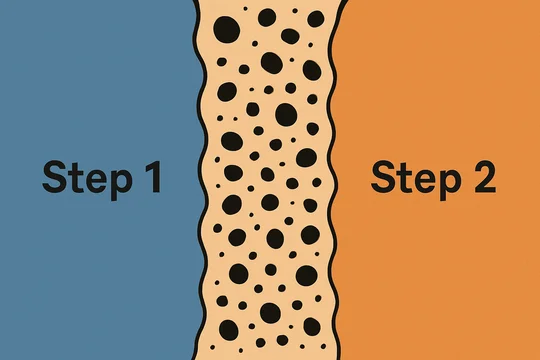
The Federal Circuit today reissued its March 2020 opinion in Illumina, Inc. v. Ariosa Diagnostics, Inc., which held a "method of preparation" claim relating to a natural phenomenon was patent eligible.
The reissue follows a petition for rehearing.
The patents involve a method for preparing a fetal DNA sample using a blood sample from a pregnant mother, by sorting the DNA fragments and removing the smaller ones using a size threshold.
The Original Bucket-Based Analysis
The Court originally described how it has consistently rejected "natural phenomenon"-related claims that fall into a "diagnostic" bucket, but has permitted method of treatment claims:
This is not a diagnostic case. And it is not a method of treatment case. It is a method of preparation case. . . . Under Mayo, we have consistently held diagnostic claims unpatentable as directed to ineligible subject matter. . . . . In contrast, we have held that method of treatment claims are patent-eligible. . . . The claims in this case do not fall into either bucket, and we consider the claims under the Alice/Mayo test.
As a "method of preparation" case, the invention was patent eligible because it was not "directed to" a natural phenomenon under Alice step 1, even though it "utilize[s]" that phenomenon:
The claimed methods utilize the natural phenomenon that the inventors discovered by employing physical process steps and human-engineered size parameters to selectively remove larger fragments of cell-free DNA and thus enrich a mixture in cell-free fetal DNA.
The Court distinguished this from the natural phenomenon itself, which was the discovery that
cell-free fetal DNA tends to be shorter than cell-free maternal DNA in a mother’s bloodstream
The "human engineered size parameters" are the claimed specific size thresholds (300 or 500 base pairs) used to sort the DNA. The relevant portion of the claims is:
selectively removing the DNA fragments greater than approximately [300 or 500] base pairs
Judge Reyna's original dissenting opinion criticized this bucket-based analysis:
The Majority sidesteps well-established precedent by reasoning that the claims in this case belong in a unique “bucket” reserved for patents that claim “a method of preparation.” 2 See Maj. Op. at 8. By placing this case in that bucket and not in a “diagnostic case” bucket, the Majority summarily dismisses precedent like Athena, Roche Molecular, Cleveland Clinic, Genetic Techs., Ariosa, . . . and others.
Somewhat Less Bucket-Based Analysis
Today's revised opinion rephrases "bucket" to "category"—sadly depriving parties and lower courts of a distinctive way to refer to it. But it keeps the remainder of the text about diagnostic vs. method-of-treatment claims.
It also tweaks the analysis to focus more on the inventor's innovation of selecting specific size ranges, adding for example:
The size thresholds in the claims—500 base pairs[] and 300 base pairs[]—are not dictated by any natural phenomenon, particularly because the size distributions of fetal and maternal cell-free DNA overlap each other (i.e., there are maternal DNA fragments shorter than 300 base pairs). The claimed size thresholds are human-engineered parameters that optimize the amount of maternal DNA that is removed from the mixture and the amount of fetal DNA that remains in the mixture in order to create an improved end product that is more useful for genetic testing than the original natural extracted blood sample.
Overall the opinion moves the analysis a bit more towards an analysis of how connected or similar the claimed process is to the underlying natural phenomenon, rather than simply placing the claim in a category of "diagnostic" claims or "method of preparation" claims.
But most of the original category- (previously bucket-) based analysis remains, and I suspect that, going forward, parties will still cite the case for the idea that "method of preparation" claims are uniformly patent eligible—which is not what it actually says.
If you enjoyed this post, consider subscribing to receive free e-mail updates about new posts.




